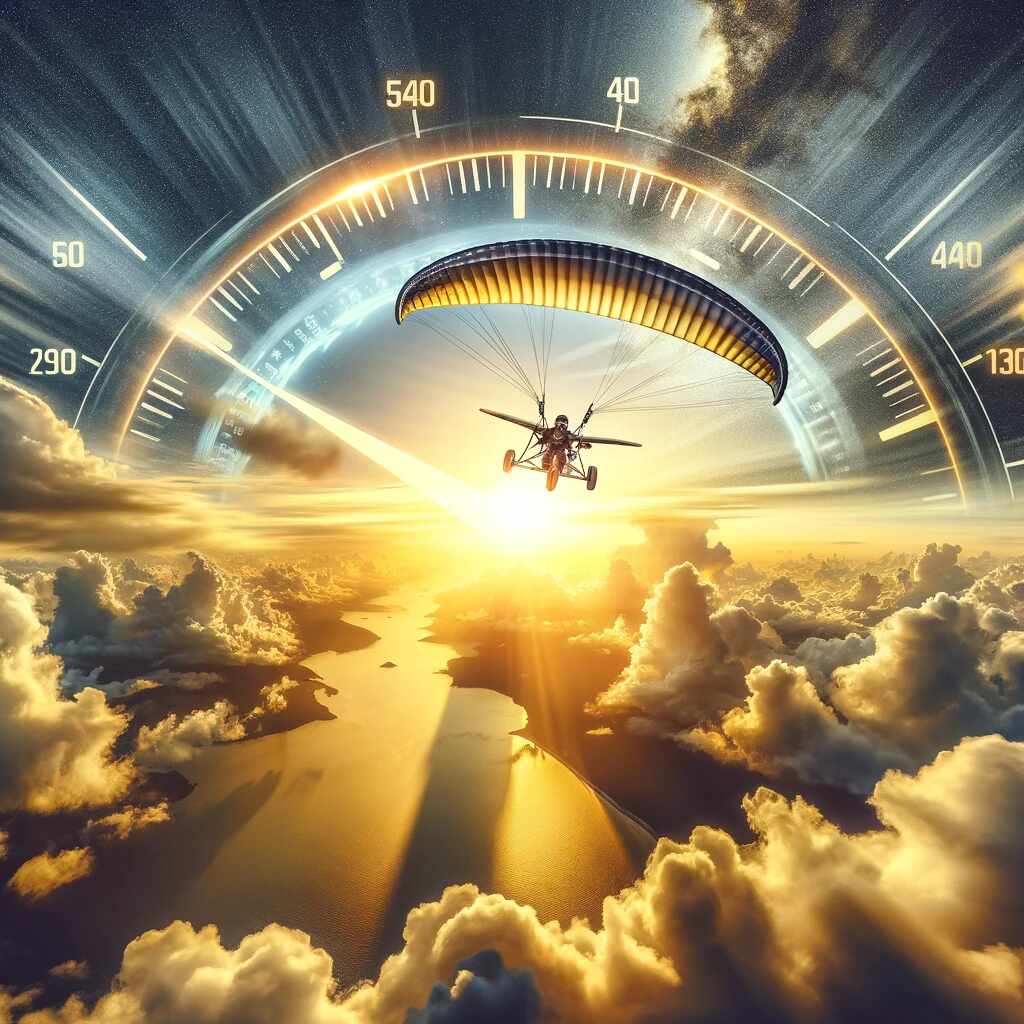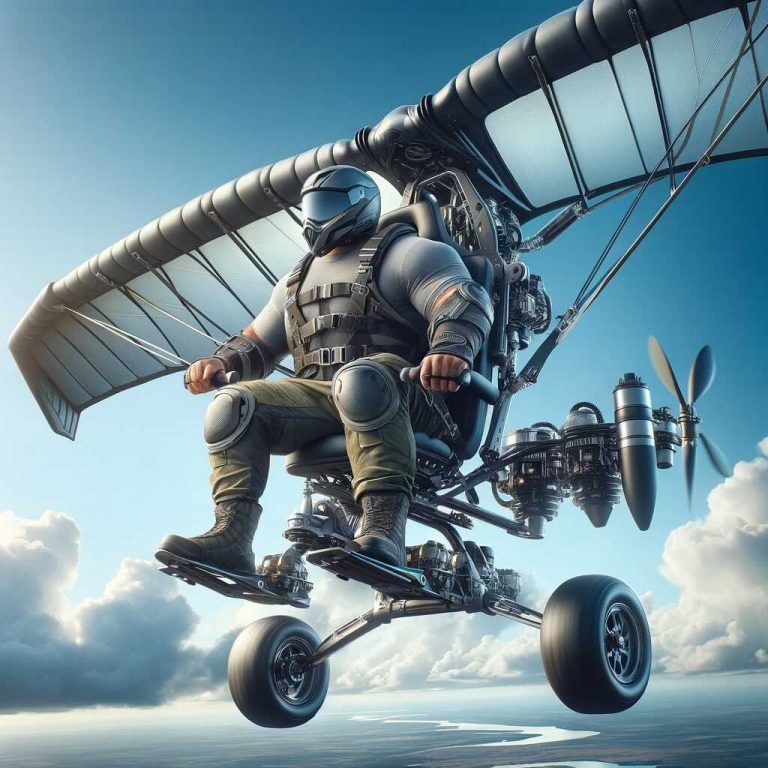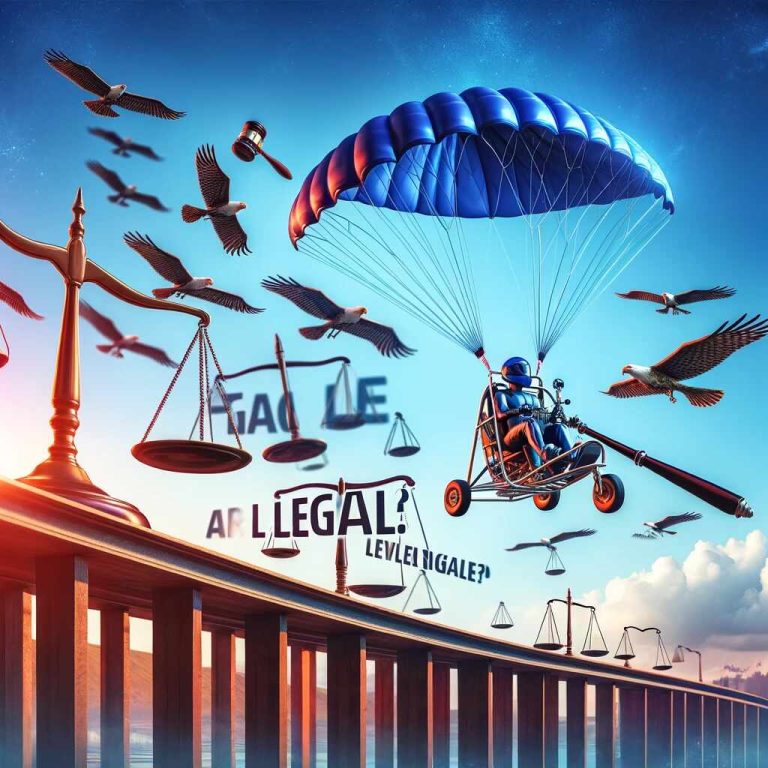Paramotoring, a thrilling sport that combines the joy of flying with the simplicity of backpack-sized aircraft, has captivated adventurers worldwide. But one question continually echoes in the minds of enthusiasts and beginners alike: “How long can a paramotor fly for?”
Paramotor flight duration varies depending on factors like engine type, throttle management, and wind conditions. Generally, 2-stroke engines offer around 2 to 4 hours of flight, while more fuel-efficient 4-stroke engines can exceed 4 hours. Wing choice and flight style also play a role. To maximize duration, pilots optimize throttle control and use wind conditions to their advantage.
In this comprehensive guide, we’ll not only explore the factors influencing paramotor flight duration but also reveal expert tips to push the limits and achieve extended ranges.
Understanding the Dynamics of Paramotor Flight Duration
Before we delve into the secrets of extending your paramotor’s flight duration, let’s review the key factors that influence how long you can stay airborne:
- Engine Choice: The heart of your paramotor, the engine, plays a pivotal role in determining flight duration. Let’s break down the options:
- 2-Stroke Engines: Popular for their power, 2-stroke engines, such as the Moster 185, do have a thirst for fuel, averaging around 4 liters per hour. Achieving better fuel efficiency often means sacrificing power.
- 4-Stroke Engines: These engines are celebrated for their fuel efficiency, thanks to their lower RPM. The Bailey V5, for instance, consumes approximately 3.8 liters per hour. EOS is also working on a promising 4-stroke engine that aims for a mere 2 liters per hour consumption.
- Electric Motors: While electric motors offer eco-friendly benefits, their flight time is limited to around an hour, making them impractical for long-distance flights.
- Wing Choice: The paraglider wing you select plays a significant role in determining your paramotor’s range. Some wings offer better glide ratios, reducing the power required to stay airborne and lowering fuel consumption. In contrast, others create more drag, demanding more fuel.
- Wind Conditions: Wind speed can significantly impact your flight duration. Flying into headwinds increases fuel consumption and reduces range, while tailwinds can extend it. Skillful pilots leverage wind conditions to optimize their flight.
- Altitude: Flying at higher altitudes affects engine performance, potentially reducing fuel efficiency and flight duration. Adjust your plans accordingly when flying at higher elevations.
- Flight Style: Your flight style, including throttle control, climbing, descending, and speedbar usage, can significantly influence fuel consumption and, subsequently, your range.

Calculating Paramotor Flight Duration
To estimate your paramotor’s flight duration, use the simple formula:
Flight Duration (hours) = Fuel Tank Capacity (gallons) / Fuel Consumption Rate (gallons per hour)
For instance, a 3-gallon fuel tank with a consumption rate of 0.75 gallons per hour would result in approximately 4 hours of flight time.
Unveiling the Secrets to Extended Paramotor Ranges
- Plan Your Route Strategically: When aiming for extended ranges, meticulously plan your flight route to benefit from favorable wind conditions. Flying with tailwinds can significantly boost your range.
- Optimize Throttle Control: Mastering throttle control is essential for maximizing your flight duration. Learn to balance throttle usage to optimize your fuel consumption while maintaining the desired speed and altitude.
- Select High-Quality Equipment: Invest in top-tier paramotor equipment and conduct regular maintenance. Well-maintained engines and wings operate at peak efficiency, enhancing your fuel economy and extending your range.
- Consider Your Altitude: If you plan to fly at higher altitudes, be prepared for reduced engine performance. Account for this in your flight plan, and monitor your fuel consumption accordingly.
- Monitor Weather Conditions: Keep a keen eye on weather conditions, as extreme temperatures can affect engine efficiency and fuel consumption. Make informed decisions based on weather forecasts to maximize your range.
- Exploit the Benefit of Wind: Capitalize on favorable winds by strategically planning your flight path. Flying with tailwinds can significantly extend your range without increasing fuel consumption.
Conclusion
In conclusion, the question of how long can a paramotor fly for? is influenced by several factors, including engine type, throttle management, wing choice, wind conditions, and altitude. Typical flight durations for paramotors with 2-stroke engines range from 2 to 4 hours, while 4-stroke engines can extend beyond 4 hours due to their fuel efficiency. To maximize your flight duration, it’s essential to choose the right equipment, employ skillful throttle control, and take advantage of favorable wind conditions.
Paramotoring offers unparalleled freedom in the skies, and understanding the nuances of flight duration empowers you to explore farther horizons. With careful planning, skillful throttle management, and the right equipment, your paramotor adventures can reach new heights, taking you to breathtaking destinations with ease.
Check this article I wrote answering if anyone can fly a Paramotor.








